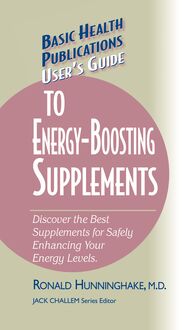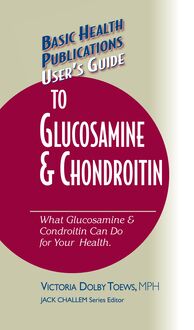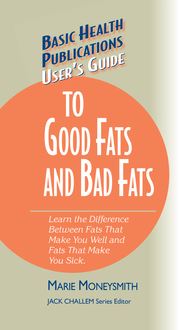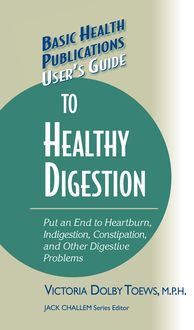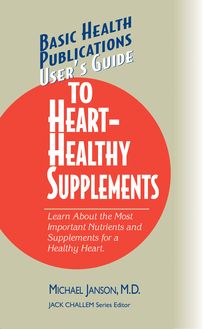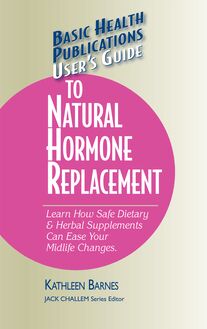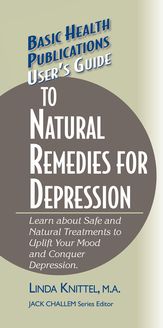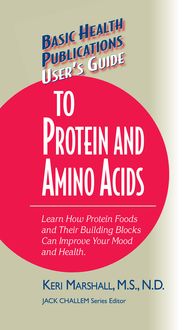-
 Univers
Univers
-
 Ebooks
Ebooks
-
 Livres audio
Livres audio
-
 Presse
Presse
-
 Podcasts
Podcasts
-
 BD
BD
-
 Documents
Documents
-
- Cours
- Révisions
- Ressources pédagogiques
- Sciences de l’éducation
- Manuels scolaires
- Langues
- Travaux de classe
- Annales de BEP
- Etudes supérieures
- Maternelle et primaire
- Fiches de lecture
- Orientation scolaire
- Méthodologie
- Corrigés de devoir
- Annales d’examens et concours
- Annales du bac
- Annales du brevet
- Rapports de stage
La lecture à portée de main
Vous pourrez modifier la taille du texte de cet ouvrage
Découvre YouScribe en t'inscrivant gratuitement
Je m'inscrisUser's Guide to Natural Allergy Relief , livre ebook
Découvre YouScribe en t'inscrivant gratuitement
Je m'inscrisEn savoir plus
Vous pourrez modifier la taille du texte de cet ouvrage
En savoir plus

Description
Sujets
Informations
| Publié par | Turner Publishing Company |
| Date de parution | 01 janvier 2003 |
| Nombre de lectures | 0 |
| EAN13 | 9781591206354 |
| Langue | English |
| Poids de l'ouvrage | 1 Mo |
Informations légales : prix de location à la page 0,0298€. Cette information est donnée uniquement à titre indicatif conformément à la législation en vigueur.
Extrait
The information contained in this book is based upon the research and personal and professional experiences of the author. It is not intended as a substitute for consulting with your physician or other healthcare provider. Any attempt to diagnose and treat an illness should be done under the direction of a healthcare professional.
The publisher does not advocate the use of any particular healthcare protocol but believes the information in this book should be available to the public. The publisher and author are not responsible for any adverse effects or consequences resulting from the use of the suggestions, preparations, or procedures discussed in this book. Should the reader have any questions concerning the appropriateness of any procedures or preparations mentioned, the author and the publisher strongly suggest consulting a professional healthcare advisor.
Series Editor: Jack Challem
Editor: Roberta W. Waddell
Typesetter: Gary A. Rosenberg
Series Cover Designer: Mike Stromberg
Basic Health Publications User’s Guides are published by Basic Health Publications, Inc.
8200 Boulevard East
North Bergen, NJ 07047
1-800-575-8890
Copyright © 2003 by Jonathan Berkowitz, M.D.
ISBN-13: 978-1-59120-635-4
ISBN: 1-59120-048-2
All rights reserved. No part of this publication may be reproduced, stored in a retrieval system, or transmitted, in any form or by any means, electronic, mechanical, photocopying, recording, or otherwise, without the prior written consent of the copyright owner.
Printed in the United States of America
10 9 8 7 6 5 4 3 2 1
C ONTENTS
Introduction
1. Allergy Facts
2. What Are You Allergic to?
3. Interior Design for Allergy Relief
4. Allergies and Diet—You Are What You Eat
5. Allergy-Friendly Supplements
6. Herbs and Other Alternative Therapies
7. The Role Drugs Play in Allergy Relief
Conclusion
Selected References
Other Books and Resources
I NTRODUCTION
I ’m in my bed, groaning. There’s a pile of soggy tissues on the floor sprouting alien life forms. Parts of my nose I didn’t even know existed are running and I can’t keep up with them. Two of my front teeth have been blown out from sneezing. Sound vaguely familiar? Okay, okay—I’m exaggerating, but you get the idea. I have allergies. I hate allergies.
For most people, allergies are an annoying fact of life that affect approximately 10 to 20 percent of Americans. What is responsible for such misery? While most any substance can cause an allergic reaction in a sensitized individual, the most notorious allergy offenders are animal dander, dust mites, feathers, molds, and pollen. We’ll talk more about these bad boys later. It is also no secret that allergies and asthma have increased more than 25 percent in the last twenty years. Although there are a number of possible reasons for this increase, air pollution, diet, food contamination, and tobacco abuse are the leading environmental/lifestyle suspects, along with a decreased consumption of the antioxidant nutrients commonly found in fish, fruits, and vegetables, and our increased consumption of polyunsaturated fats coupled with a decreased intake of oily fish. According to one study in the journal Thorax , “diet has been a determinant of the worldwide increases in asthma and allergies.”
As with most of life’s problems, the more you know the better off you are. Allergies are no exception and the more you know about allergies, the better you’ll feel. It is hoped that what you will learn from this guide will, at the very least, help you control, and perhaps even remove, allergies from your life. The first step in understanding allergies is to be clear about the word “allergy.” As discussed in Chapter 1 , allergies mean different things to different people and rarely are two allergies exactly alike.
Perhaps even more important is to know what triggers your symptoms. Knowing what you are allergic to (the focus of Chapter 2 ) is the most critical question you can answer. If you know what you’re allergic to, there’s a good chance you can avoid that offending agent and perhaps even rid yourself of allergy symptoms. Knowing your allergies relates directly to source control, the subject of Chapter 3 . Source control means removing those items from your environment that are responsible for your symptoms. Study after study has demonstrated that source control is, without a doubt, the most effective means of allergy elimination.
What happens, however, if you can’t identify your allergy triggers, or if you’re allergic to pollen or ragweed, allergens that source control cannot readily eliminate? This is where diet and supplements enter the allergy picture. Chapter 4 discusses how our diet can, in part, determine how allergic we are and can even make us less allergic. Diet, coupled with supplements, herbs, and other alternative therapies (the subjects of Chapters 5 and 6 ), can offer relief to those with allergies for whom source control is impractical. You may first want to consult with your own physician or healthcare practitioner before beginning a new regimen.
As stated, the whole purpose of this book is to either make your life allergy-free or, at the very minimum, reduce the amount of allergy medications you take. Yet, despite our best efforts, there will always be some people who will need powerful antiallergy pharmaceuticals to help relieve their allergic symptoms, the focus of Chapter 7 . If you find you’re one of these people, don’t despair. Most of these medications work but may have potentially dangerous side effects. Other medications, such as Nasalcrom, are considered relatively safe and can be bought without a doctor’s prescription. In the final analysis, no matter where you fit into the allergy picture, this book will lead you to ask those important questions that will help you discover what your individual allergies are and, more important, how you can control and perhaps even eliminate them.
CHAPTER 1
A LLERGY F ACTS
T he word “allergy” has different meanings for different people, but for most, it means seasonal hay fever, those fits of sneezing and runny nose that occur during predictable times of the year, such as spring or fall. For others, the word means a food or drug allergy characterized by a rash when, for example, ingesting a certain medication, or by diarrhea after eating a particular food. Some people may know exactly what triggers their allergies while, for others, the cause of their misery remains a mystery. Allergies, like people, come in all shapes and sizes, but for the vast majority of people, allergies begin with the nose.
From a functional standpoint, the nose helps us breathe, warm, moisturize, and filter air before it reaches our tender lungs. The word “allergen” is a medical term for a particle that can cause an allergic reaction. Allergens vary from person to person and can range from pollen to food additives. For the vast majority of people, however, allergens are airborne, and it is when an allergen is trapped inside the nose that our troubles begin.
Allergen
Generic term for any inhaled or ingested particle (dander, food coloring, pollen, etc.) that can trigger an allergic reaction. The words “allergen” and “antigen” are often interchangeable.
Let us take a moment to examine the word “allergen.” One of the important roles of the body’s immune system is to identify “self” from “non-self.” Self is what belongs to us: the cells, organs, and tissues that make up our bodies. Non-self includes the rest of the world that is not a natural part of our bodies and can include bacteria, viruses, food, and pollen; it is also referred to as allergens or antigens. The immune system’s ability to differentiate self from non-self is obviously important, as antigens can represent dangerous organisms like bacteria or fungi. Most any substance can act as an antigen/allergen, but the body usually reacts hostilely only to antigens it considers harmful. This hostile reaction starts with the body’s formation of antibodies, which are proteins that bind to antigens and alert the immune system that a potentially dangerous invader is present.
Antigen
Any molecule (for example, pollen) that can interact with the immune system and trigger a response, such as an allergic reaction.
While these antibodies are found throughout the body, for allergic people it is the antibodies residing in the nose and lungs that cause the most trouble. The nose and lungs are covered by a lining called “respiratory epithelium” that harbors many different cells and proteins, such as immunoglobulins and mast cells. Immunoglobulins are those protein antibodies that act like sentries, recognizing allergens and binding to them. Our tissues contain millions of individual antibodies that are specially manufactured to recognize a specific antigen. For instance, we have antibodies that recognize only the influenza virus. We have other antibodies that recognize only certain types of fungi. Whether or not a person develops an immune or allergic reaction to an antigen depends on whether or not they have antibodies specific for that antigen. Virtually every person on Earth has antibodies to the influenza virus, for example, but not to ragweed, which explains why some people are allergic to ragweed and others are not.
Antibody
An immune-system protein that binds to a specific allergen or antigen, and can trigger an allergic reaction. The chief antibody of the allergic response is immunoglobulin E (IgE).
Immunoglobulin
Protein central to immune-system response, including the allergic reaction, responsible for binding and identifying potential allergic triggers.
Say, for instance, you inhale a virus. The virus has antigens on its surface that help it attach to the respiratory epithelium and allow it to be recognized by an immunoglobulin specifically designed for that virus. When the immunoglobulin binds to the virus, an antibody-antigen interaction
-
 Univers
Univers
-
 Ebooks
Ebooks
-
 Livres audio
Livres audio
-
 Presse
Presse
-
 Podcasts
Podcasts
-
 BD
BD
-
 Documents
Documents
-
Jeunesse
-
Littérature
-
Ressources professionnelles
-
Santé et bien-être
-
Savoirs
-
Education
-
Loisirs et hobbies
-
Art, musique et cinéma
-
Actualité et débat de société
-
Jeunesse
-
Littérature
-
Ressources professionnelles
-
Santé et bien-être
-
Savoirs
-
Education
-
Loisirs et hobbies
-
Art, musique et cinéma
-
Actualité et débat de société
-
Actualités
-
Lifestyle
-
Presse jeunesse
-
Presse professionnelle
-
Pratique
-
Presse sportive
-
Presse internationale
-
Culture & Médias
-
Action et Aventures
-
Science-fiction et Fantasy
-
Société
-
Jeunesse
-
Littérature
-
Ressources professionnelles
-
Santé et bien-être
-
Savoirs
-
Education
-
Loisirs et hobbies
-
Art, musique et cinéma
-
Actualité et débat de société
- Cours
- Révisions
- Ressources pédagogiques
- Sciences de l’éducation
- Manuels scolaires
- Langues
- Travaux de classe
- Annales de BEP
- Etudes supérieures
- Maternelle et primaire
- Fiches de lecture
- Orientation scolaire
- Méthodologie
- Corrigés de devoir
- Annales d’examens et concours
- Annales du bac
- Annales du brevet
- Rapports de stage



